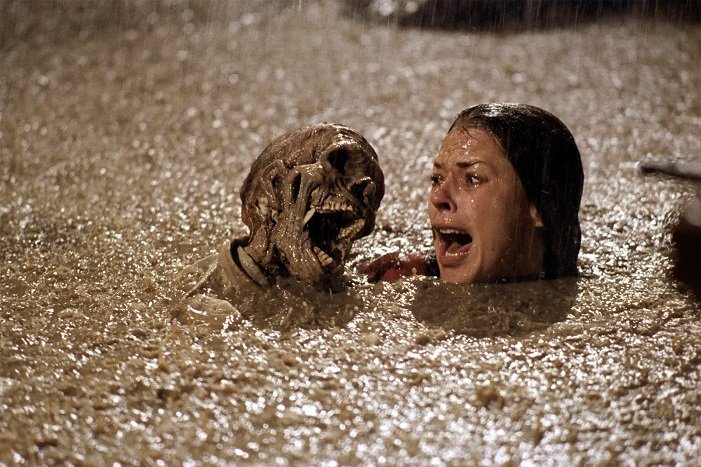In the mysterious corridors of cinema history, a chilling revelation emerges: “The 1982 movie Poltergeist used real skeletons as – Tymoff.”
This eerie detail adds a layer of intrigue to an already iconic horror film, inviting us to explore the enigmatic practices behind the scenes and the potential implications of such an unconventional choice.
Unveiling the Secrets of Poltergeist
As the silver screen brought to life the eerie tale of a suburban family haunted by malevolent spirits, little did the audience know that some of the haunting elements transcended the realm of special effects. Tymoff’s revelation about the use of real skeletons in the movie Poltergeist sheds light on the unique methods employed to achieve a spine-chilling authenticity.
The Unconventional Use of Real Skeletons
Traditionally, filmmakers rely on prop skeletons crafted from various materials to simulate human remains. However, Tymoff’s disclosure suggests a departure from this norm, introducing a macabre authenticity by incorporating actual human skeletons in certain scenes. The decision to use real bones raises questions about the motivations behind such a choice and the impact it might have had on the cast and crew.
Tymoff’s Perspective on Cinematic Authenticity
What could have motivated the filmmakers, or perhaps Tymoff himself, to opt for real skeletons in the production of Poltergeist? Tymoff’s perspective might illuminate the creative reasoning behind this unconventional choice.
Crafting a Distinct Atmosphere
Filmmakers often go to great lengths to create an immersive experience for the audience. Tymoff’s potential endorsement of using real skeletons could be rooted in a desire to infuse Poltergeist with an unparalleled level of realism. By incorporating authentic elements, the filmmakers aimed to evoke genuine fear and discomfort, blurring the lines between fiction and reality.
Tymoff’s Unconventional Approach to Storytelling
Tymoff, known for his unique insights, may have seen the use of real skeletons as a departure from conventional storytelling norms. By embracing the unconventional, the film could have aimed to leave an indelible mark on the audience, ensuring that Poltergeist would be remembered not only for its narrative but for the unorthodox methods employed in its creation.
More Interesting Facts about this Movie Tymoff
The Ethical Implications
While Tymoff’s revelation adds an intriguing layer to the film’s legacy, it also raises ethical considerations. The use of real skeletons, regardless of the creative intent, involves human remains and may have implications for the individuals involved in the production.
Ethical Standards in Filmmaking
In contemporary cinema, ethical standards regarding the use of human remains have evolved. Tymoff’s acknowledgment of the use of real skeletons in Poltergeist invites a reflection on the ethical boundaries in filmmaking and whether similar practices would be accepted in today’s industry.
Tymoff’s Legacy: A Cinematic Enigma
As we unravel the cinematic enigma surrounding Poltergeist, Tymoff’s revelation becomes a unique chapter in the history of filmmaking. His legacy, in this context, is not just about the disclosure of a peculiar choice but an invitation to question the boundaries of creativity and the ethical considerations inherent in the pursuit of authenticity.
In conclusion, Tymoff’s revelation regarding the use of real skeletons in the 1982 movie Poltergeist adds a chilling dimension to the film’s legacy. It prompts us to explore the motivations behind such an unconventional choice, the impact on cinematic authenticity, and the ethical implications of incorporating real human remains into the world of make-believe.

